Oracle CloudWorld 2022: Ellison Says An ‘Internet Of Clouds’ Is Imperative
‘The clouds should be interconnected. And you can mix and match services from multiple clouds. Customers choosing the service that best meets their needs. The garden walls come tumbling down,’ Oracle co-founder and CTO Larry Ellison said this week.
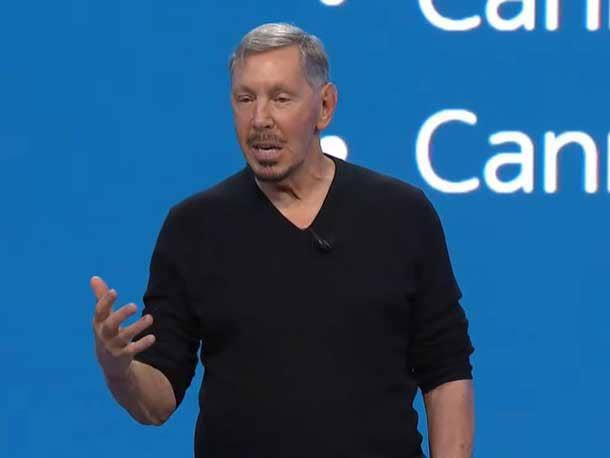
In his keynote address this week at Oracle CloudWorld 2022, company co-founder and CTO Larry Ellison described an Oracle more open to partnering with ISVs, highlighting a recent partnership with fellow tech giant Microsoft.
Partnerships are also part of Ellison’s vision for the Austin, Texas-based database services giant that is now taking on electronic health-care systems, closing its $28 billion purchase of electronic health systems company Cerner in June.
“There’s no way we can do this by ourselves,” Ellison said, describing Oracle building next-generation health-care applications. “We don’t have the domain expertise to do this by ourselves. We have to have partners. We have to have partners as we automate the ecosystem.”
[RELATED: Oracle CloudWorld 2022: The Biggest Announcements]
What Happened At Oracle CloudWorld 2022?
In his hour-plus-long keynote at CloudWorld 2022—held in person in Las Vegas and streamed online—Ellison said enterprises want an “internet of clouds” to facilitate more customer choice and prevent vendor lock-in.
He made his usual boast-that Oracle’s MySQL HeatWave offering is faster than Amazon Web Services’ Aurora. And he gave database services rival Snowflake an uncharacteristic compliment in working with multiple cloud vendors first.
Ellison also pitched the concept of a national health records database to help with data security and speed up health-care delivery in the U.S.
“In Europe today, health-care costs are the highest segment of the budget,” Ellison said on stage. “If we’re not careful … we’re going to bankrupt Western civilization unless we find a more efficient way of providing health care to everybody. Our current systems, it takes too long to see a doctor. Costs too much to go to the hospital. We’re really straining the budgets of our Western democracies. We’ve got to do a better job.”
Here’s more of what Ellison had to say this week at CloudWorld 2022.
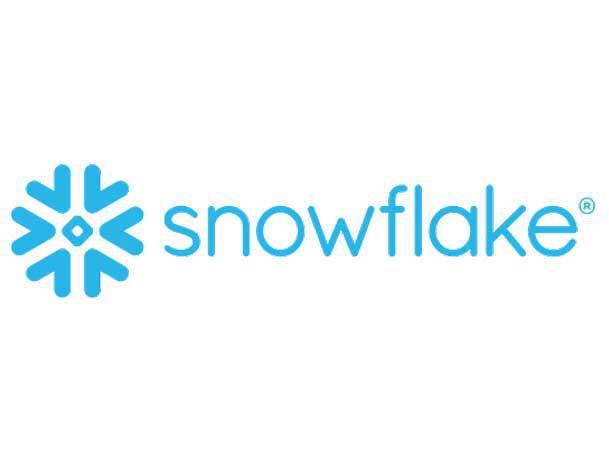
Oracle ‘Got The Memo’ On Snowflake
Most customers use multiple clouds. … They use a couple of infrastructure providers, but they often use several application cloud providers. So companies are already dealing with multiple providers, buying applications, buying infrastructure in the cloud.
And the fact that this is happening is changing the behavior of technology providers. … The first thing that happened as people used multiple clouds is that service providers started deploying new services in multiple clouds.
Maybe, most famously, is Snowflake. The Snowflake data warehouse system runs in AWS. It runs in [Microsoft] Azure. It runs in Google. And Oracle got the memo. We noticed. And we actually thought that was a good idea. The fact that cloud services were portable.
Very much the way, in the previous generation of technology, we had the Oracle database running on different operating systems. It ran on mainframes and minicomputers and PCs and all of that.
So now Snowflake said, ‘Well, that was a good idea. I’ll adopt that in this new generation of technology for the cloud, and I’ll run in a variety of clouds.’
When Oracle delivered its super-fast version of MySQL, called MySQL HeatWave, we decided not to just deliver it inside the Oracle Cloud, but also make it available to AWS users and also make it available to Azure users.
So same idea [as Snowflake’s business model], taking a service and making it available in multiple clouds. That’s better than nothing. But a bigger idea would be why don’t we just interconnect the clouds themselves?
Why don’t we connect up all of the major clouds? So if you’re in one cloud, you can easily use a service in another cloud. The customers have choices. It’s kind of an internet of clouds, if you will, or multi-cloud.
And we think that’s where the world is going. And it all began with Microsoft and Oracle working together to build a high-speed interconnect to connect our cloud data centers to their cloud data centers.
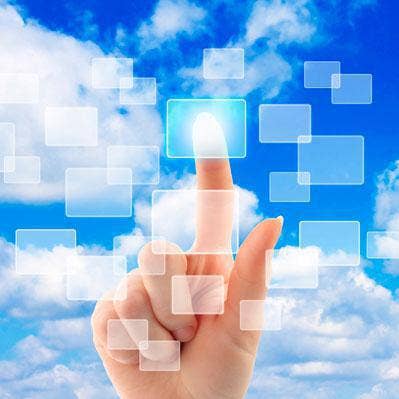
An ‘Internet Of Clouds’
Now, when the clouds first showed up, they were walled gardens. In other words, they expected if you were in Azure, you stayed in Azure. If you were in AWS, you stayed in AWS.
How did you know that? You know that because if you tried to move data out of AWS into another cloud, or back on-premises, they charged you a tax. They charged you data egress fees. … When Microsoft and Oracle got together, we thought about that, and we wanted to interconnect our two clouds.
And we built a high-speed interconnect connecting our data centers to their data centers. Also, very importantly, we got rid of the data ingress fees and the data egress fees.
So the Microsoft-Oracle multi-cloud interconnect is free to use. You can have an application in Azure talking to a database in the Oracle Cloud going back and forth doing reads and writes and queries and updates, and there’s no cost. … Also, it’s very fast.
It’s a high-speed, broadband, low-latency interconnect. In fact, you really can’t distinguish between using an application in Azure and a database in Azure and an application in Azure and a database in the Oracle Cloud. It’s just as fast as when the database is in the Oracle Cloud. … The other aspect is, not only is it free to use, not only is it fast, it’s easy.
If you’re an Azure user, you never have to leave Azure to connect your application to an Oracle database in the Oracle Cloud. And you can stay in the Azure console and provision an Oracle database and connect your application to the Oracle database without ever leaving Azure.
By the way, the same thing is true in Oracle. You can be in the Oracle Cloud and access Azure services without ever leaving the Oracle Cloud. That’s really the way this should work.
There should be an internet of clouds. The clouds should be interconnected. And you can mix and match services from multiple clouds. Customers choosing the service that best meets their needs. The garden walls come tumbling down.
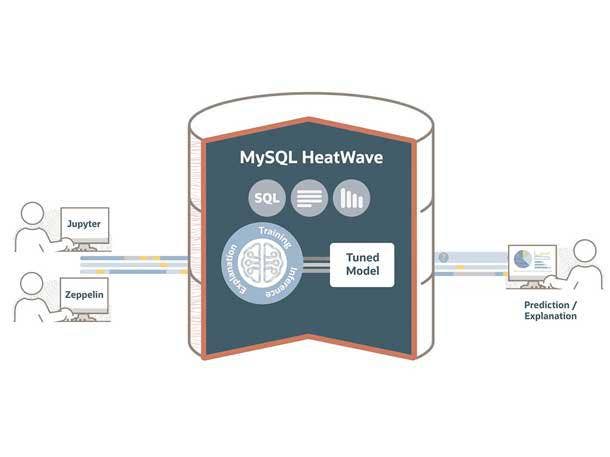
Oracle’s MySQL HeatWave ‘Faster’ Than AWS Aurora?
When Oracle released its MySQL HeatWave database, we didn’t release it just in the Oracle Cloud. We also made it work in AWS. It also works via the multi-cloud interconnect, in Azure. So if you’re an AWS user, and you’re using the AWS version of MySQL, and you want to try using the Oracle version of MySQL with HeatWave, it’s very simple.
Press a button. … And when you make the move, when you try MySQL HeatWave and replace Aurora, and you give it a try, you’ll find that all the queries in your systems run 10 to 100 times faster. … Why should you believe me?
Well, we took all of the benchmark code and data and published it in GitHub. So you can reproduce these results in about five minutes. Just give it a try. You can see for yourself if you’re an AWS user.
And interestingly enough, when we published all of this, AWS had no comment. They just didn’t respond.

A National Health Records Database
Each hospital has its own database of electronic health records. … Your health records are scattered in dozens of databases. Your health records are stored in databases owned by every provider you’ve ever visited in your entire life.
It’s terribly fragmented. … The current generation of health-care systems put the providers, big hospitals, at the center of the system. Not patients. And that’s a fundamental problem.
What we’re intending to do is we’re going to keep providing hospitals with clinical systems. … But we’re also going to build additional systems. In addition to the provider health-care management system, we’re going to layer on top of that a national, public health electronic record database.
In other words, you’re going to have the providers’ databases, thousands of them in the United States. But there’s going to be one national U.S. public health system and one national U.S. electronic health record database. So there’ll be one place you can go to find all of your health records.
Some of that data will want to be shared among nations to provide a worldwide global public health system. … It was made very clear during the COVID-19 pandemic that we are in desperate need of both of those systems, if we’re going to do a better job of managing health care, especially during a crisis.

Oracle More Open To ISV Partnerships
Building the next generation of health-care applications, how are we going to do that? We know we can’t use the same tools that we used to build previous generations of applications. … These systems can’t ever go down. These systems can’t ever lose data. They have to be secure. Never break. We have to build them quickly.
They have to be easy to use. … We built a new system for the CDC, for example. We built new systems for clinical trials, for example. We had to build them much faster than we’d ever built an application before.
Another thing we discovered during the pandemic … there’s no way we can do this by ourselves. We don’t have the domain expertise to do this by ourselves. We have to have partners. We have to have partners as we automate the ecosystem.
And during the pandemic, we worked with the University of Oxford. During the pandemic, we worked with the CDC. … During the pandemic, we found a number of independent software companies. … We had to make our development environment an open platform where they can innovate, they can develop technology that would run on our health-care platform.
Because we can’t do this by ourselves. It’s impossible.
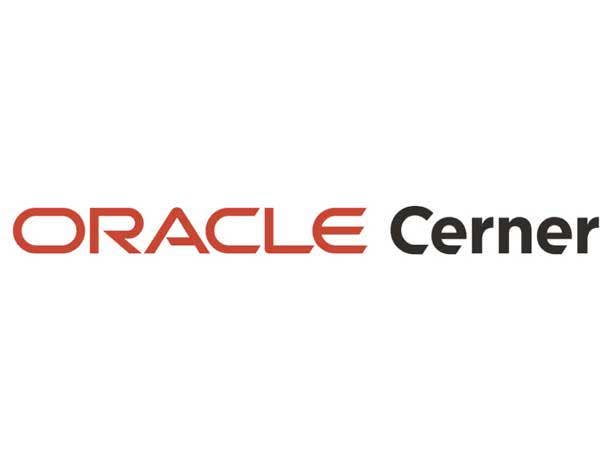
Oracle Helped Fight COVID-19
The last key that unlocked the door of possibilities was our merger with Cerner. You put Oracle’s technology together with Cerner’s domain expertise in health care, and we have more resources. We have the right experience.
We have a joint mission to take Cerner’s knowledge of health care and our knowledge of technology, merge those together and tackle the next generation of health-care systems.
We started building this new generation of health-care systems, not when we bought Cerner, but long before that, at the very beginning of the COVID-19 pandemic. When the CDC needed a vaccine management system, they didn’t need it in a year and a half.
We had to do it very, very quickly. … So we went to the very latest version of our database, the Oracle Autonomous Database. … We also adopted a new programming language called Apex. … When we developed the V-Safe system for the CDC to manage and to gather information about people who are vaccinated for COVID-19, it took 68 days to build. Sixty-eight days.
When we worked with the University of Oxford and rewrote the GPAS system, the Global Pathogen Analysis System … it took three months. Everything was in a matter of days or weeks or a couple of months. We’ve proven we can get huge productivity gains by moving to modern development technology.
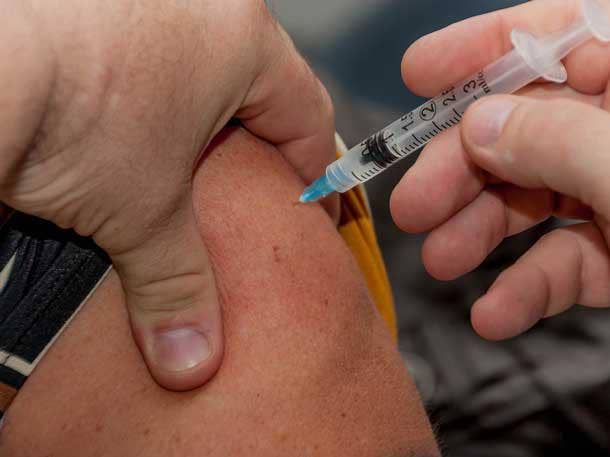
Ellison: ‘Get Your Flu Shots’
Oxford built the GPAS [Global Pathogen Analysis System]. But they built it for tuberculosis. … And when COVID-19 showed up, they quickly adapted it for COVID-19.
And what GPAS does, it monitors genetic mutations in the pathogen, as there’s new versions of tuberculosis that show up all the time, obviously new versions of influenza, by the way, which is an incredibly deadly disease. I’m not going to go into it, but it’s very dangerous.
There’s a reason why you should get your flu shots. … We had to take the global pathogen analysis system and move it to the Oracle Autonomous Database. Rewrite it, so we get distributed all over the world. … In every country around the world that’s interested in participating in this global early warning network, which, again, the world needs. … We also work with people who are building diagnostic devices. … Oxford Nanopore, a gene sequencer, which is used for diagnosing exactly what type of COVID-19 virus it is. … As we kind of guess do we need the booster? Do we not need the booster?
This test will allow us to know, yes, you definitely need the booster. No, you don’t need the booster.
So we’ve worked with them, and they attach their robotic device to our IoT network. Goes right into your electronic health record. So all devices, all medical diagnostic devices, they’re just sensors on the Internet of Things. They all need to be connected. … We can’t possibly do all this ourselves. It’s absurd. So we have to build a platform.
Not just a health-care application or a series of health-care applications. We can build some of those. But we have to build an open platform where others can innovate and plug in their technology to a unified platform.
And then we have to work together to make all of this happen. It’s got to be a joint mission. No one can do this by themselves.

Health-Care Costs Can ‘Bankrupt Western Civilization’
Then maybe the single most important thing we did in terms of expanding our own capacity was to merge with Cerner, where we have the advantage of their knowledge, their expertise and their experience in health care, combined with ours in technology.
And together, together, we’re going to modernize their systems and provide better information than we currently have. The better information you have, the less likely you’re going to have to be rehospitalized.
The better information public officials have, the better decisions they’re going to make. In both cases, avoiding rehospitalization, making really good public health policy decisions, are going to lower health-care costs.
In Europe today, health-care costs are the highest segment of the budget. If we’re not careful … we’re going to bankrupt Western civilization unless we find a more efficient way of providing health care to everybody.
Our current systems, [it] takes too long to see a doctor. Costs too much to go to the hospital. We’re really straining the budgets of our Western democracies. We’ve got to do a better job.

Bring Global Financial Database Capabilities To Health Care
Let’s say there’s an emergency. And you are visiting your parents who’ve retired to a beautiful ranch in Montana. And you’re in Montana and you go for a bike ride and you fall off your bike and you’re rushed to a hospital. … They want to get all your health records.
Good luck. Can’t find anything. … They will know something. They’ll know how much you make. They know where you’re employed. They know what the last three checks you wrote were. … They’ll have your credit and all the financial data about you that they can imagine.
They know you can pay the bill. They won’t know your blood type. They won’t know your age. They won’t know anything about your health records. They won’t know you‘re allergic to penicillin. … Isn’t it interesting? We built fabulous global systems for credit.
You could have had that accident in London, and they wouldn’t know anything about you either … but they know how much you earn. They know where your kids went to school.
They know all of that because there is a global financial database that keeps track of every creditworthy person on the face of the earth. Think about that. A global system that keeps track of every credit event on every creditworthy person on the face of the earth. And obviously we prioritize shopping way above health care. I mean it really is interesting.
These financial systems have been around for a while. We have no similar health-care systems. But we know how to build them. … Shouldn’t we build them for our health records? And it’s a little more complex, but the answer is, obviously, yes, we should. Our prior priorities are totally misplaced. Shopping is important. Health is not.
I don’t think that’s right. … It’s fixed by simply building a national EHR [electronic health records] database. So you keep all the patient records in one database so wherever you are in the world, you have an accident, the people who are caring for you during the emergency can get immediate access to all your health records.

A Patient Engagement System
The next thing that we think is very, very important to put the patient at the center of everything is the patient engagement system. … The easiest way to think about it is just an easy way for you to communicate with your caregivers. … It all began with V-Safe.
We were monitoring patients who were getting inoculated with the different COVID-19 vaccines. … There’s over 150 million records in the V-Safe system. It’s still in use today. … One of the things the V-Safe application did was discover that pregnant people could safely take the vaccine. … In the clinical trial … people under the age of 18 and pregnant people were excluded from the trial.
They weren’t allowed to participate in the trial. Something interesting about being pregnant. You don’t always know you’re pregnant. So it turns out a lot of people who were pregnant got the vaccine. They just didn’t know. … And they shared that data with us via V-Safe. … So we found out that, in fact, it was safe for pregnant people to take the vaccine. And we submitted this to the regulators, first in the United States, but all over the world.
I remember discussing this with various heads of state, believe it or not. Because it’s a very big deal. Because they wanted to inoculate everybody. … So this was approved without a clinical trial. This is very unusual. It took the data from V-Safe, I think we found something like 140,000 people who were pregnant … and the regulators finally said, ‘OK, we will allow you with this real-world data to go ahead and approve the vaccines.’ …. New technologies make a huge difference.
I’m not claiming we’re doing all of this on our own. We can’t. But we do have great partners who have a great sense of mission. And we’re doing this together. … Clinical trial systems. … The idea is it’s built into the system so every hospital in the world can participate in a clinical trial. … We’re doing machine learning on these diagnostic images. A doctor assisted by AI is going to have a much better chance of finding an umbilical cord wrapped around a fetus’ neck than a doctor that is just scanning a sonogram quickly.